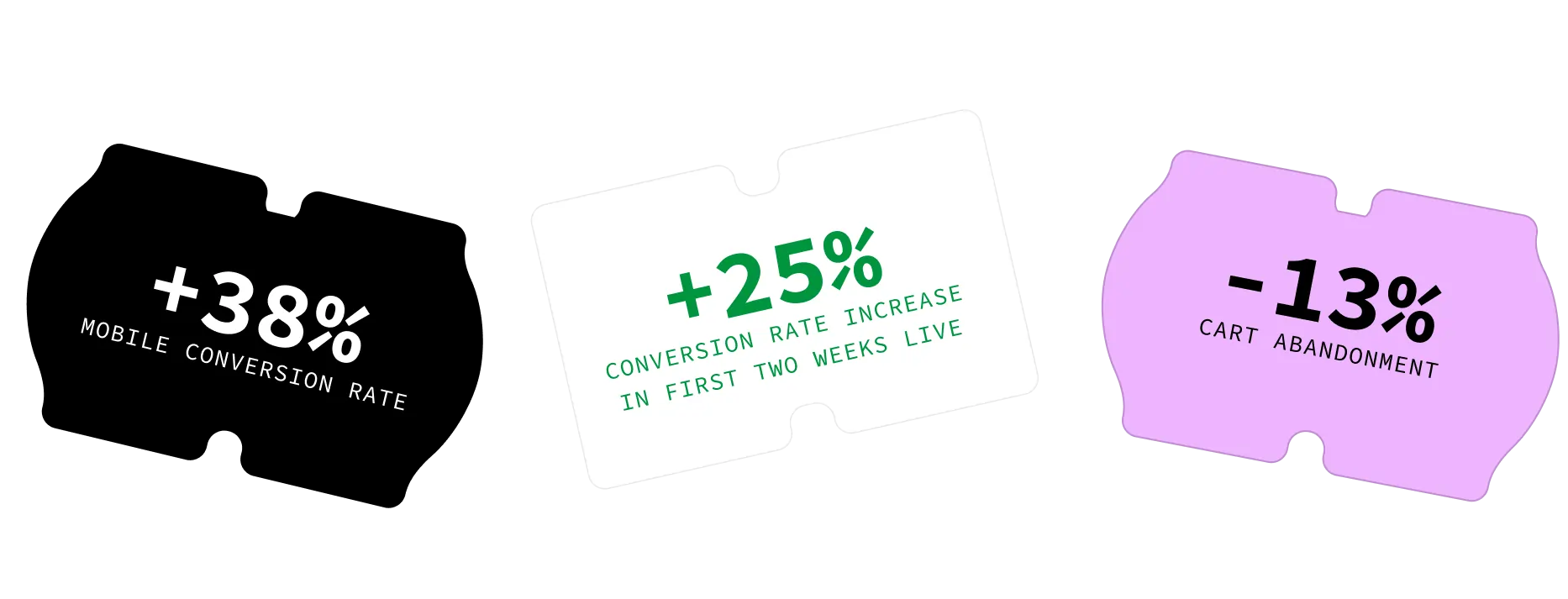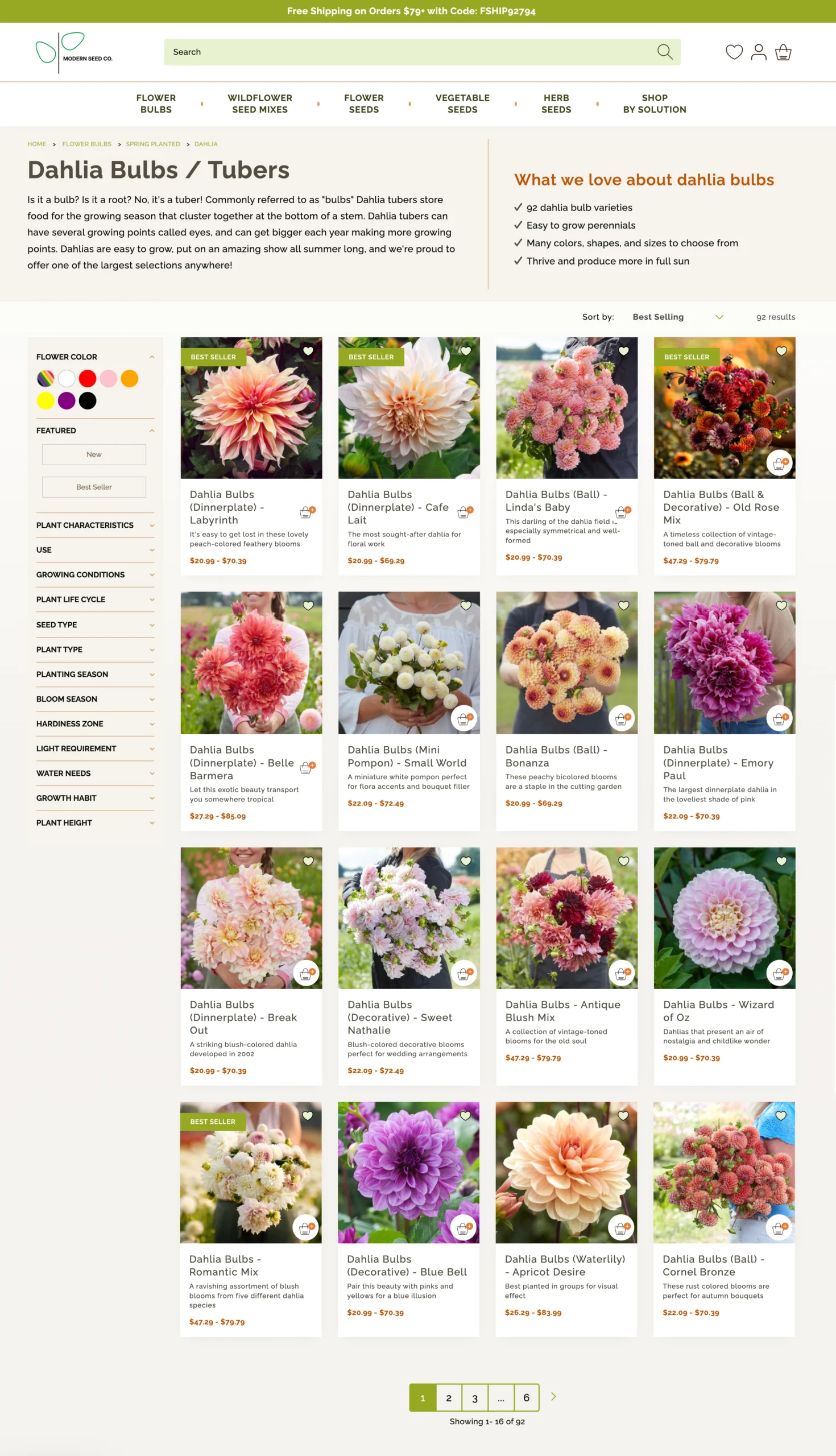Modern Seed Co.
is bringing gardening into the ecommerce age

Migrating a Modern Seed Company to Shopify Plus
The Challenge
This modern seed and flower bulb seller’s journey began like a classic startup story. What started as a small operation in a California garage back in 2009 quickly grew into a thriving business, eventually relocating to a much larger warehouse in Asheville, NC. Today, they sell thousands of products online across the US, but their aging ecommerce platform couldn’t keep up with their growth.
The company faced rising costs, operational limitations, and the complexities of maintaining their legacy system. They needed a robust, scalable platform to streamline their operations, integrate with a new ERP system, and prepare for the busy season—all without disrupting their business.
Project Goals
- Streamline Operations: Migrate from their legacy platform to Shopify Plus, integrating with a new ERP system to automate processes and reduce manual work.
- Enhance Customer Experience: Preserve the site’s unique design while improving usability, search functionality, and product discovery.
- Data Migration: Efficiently transfer product data, customer information, and order history to Shopify Plus without losing critical business data.
- On-Time, On-Budget Delivery: Complete the migration before the peak season to ensure a smooth transition for both the business and its customers.
Our Plan
The project required close collaboration between Command C and the client’s team to ensure a seamless transition. Here’s how we tackled the key challenges and delivered a robust, user-friendly ecommerce site on Shopify Plus.
Advanced Product Data Structuring: One of the main challenges was effectively presenting thousands of products with unique characteristics, such as growing conditions, water needs, and hardiness zones. We worked closely with the client to consolidate product records and define a comprehensive data structure. This meticulous groundwork enabled us to create a robust filtering system and clear product hierarchy, enhancing both customer experience and administrative efficiency.
Developing a Custom Plant Finder Tool: To help customers find the perfect plant or seed, we created a unique plant finder tool. This guided experience allows users to search based on specific attributes like light requirements, soil conditions, and plant height. Built on the advanced product data structure, this tool provides accurate and reliable recommendations, making it easier for customers to find exactly what they’re looking for.
Building a Robust Data Layer for Analytics: With the transition to Google Analytics 4 (GA4), it was crucial to establish a comprehensive data layer. We created a custom setup for Google Tag Manager (GTM), ensuring uninterrupted tracking and integration with existing analytics. This groundwork not only supported the current setup but also prepared the client for a smooth migration to GA4.
Creating Season-Aware Product Pages: Given the nature of their products, it was essential to communicate availability and delivery expectations clearly. We developed custom product pages that are “season aware,” allowing customers to see when specific seeds or bulbs are available and set shipment expectations accurately. This feature helps reduce customer inquiries and enhances the shopping experience.
Migrating Additional Sub-Brands: After the success of the initial migration, the client asked us to move three additional sub-brands from outdated platforms to Shopify. By leveraging the same advanced data structure and custom tools, we efficiently transitioned these brands, allowing them to benefit from the foundational improvements of the main store.

The Results
- Streamlined Operations: The integration with the new ERP system and the advanced product data structure have significantly reduced administrative overhead. Inventory is now synced automatically, and order fulfillment continues frictionlessly throughout the migration.
- Enhanced Customer Experience: The site’s refreshed design, combined with the custom plant finder tool and improved filtering options, has made it easier for customers to discover products and complete purchases.
- Impressive Conversion Rates: The site has already seen a 38% increase in overall ecommerce conversion rate and a 22%-25% increase in mobile conversion rate. Additionally, there’s been a 13% decrease in cart abandonment, highlighting the effectiveness of the migration.
- Future-Proof Analytics Setup: The robust data layer and GTM integration have prepared the client for the transition to GA4, ensuring they can continue to measure the impact of their marketing efforts and customer behavior over time.
Looking Ahead
The migration to Shopify Plus has provided this modern seed company with a scalable, efficient platform that supports their continued growth. From optimizing operations to enhancing customer experience, the project’s success has set them up for a prosperous future. We’re excited to continue our partnership and support their ongoing digital transformation.
“We are thankful not only the work your team has done but also the way they do it. Extremely professional and knowledgeable and we are grateful for this. ”
– Rick Maggio, Director of Growth
